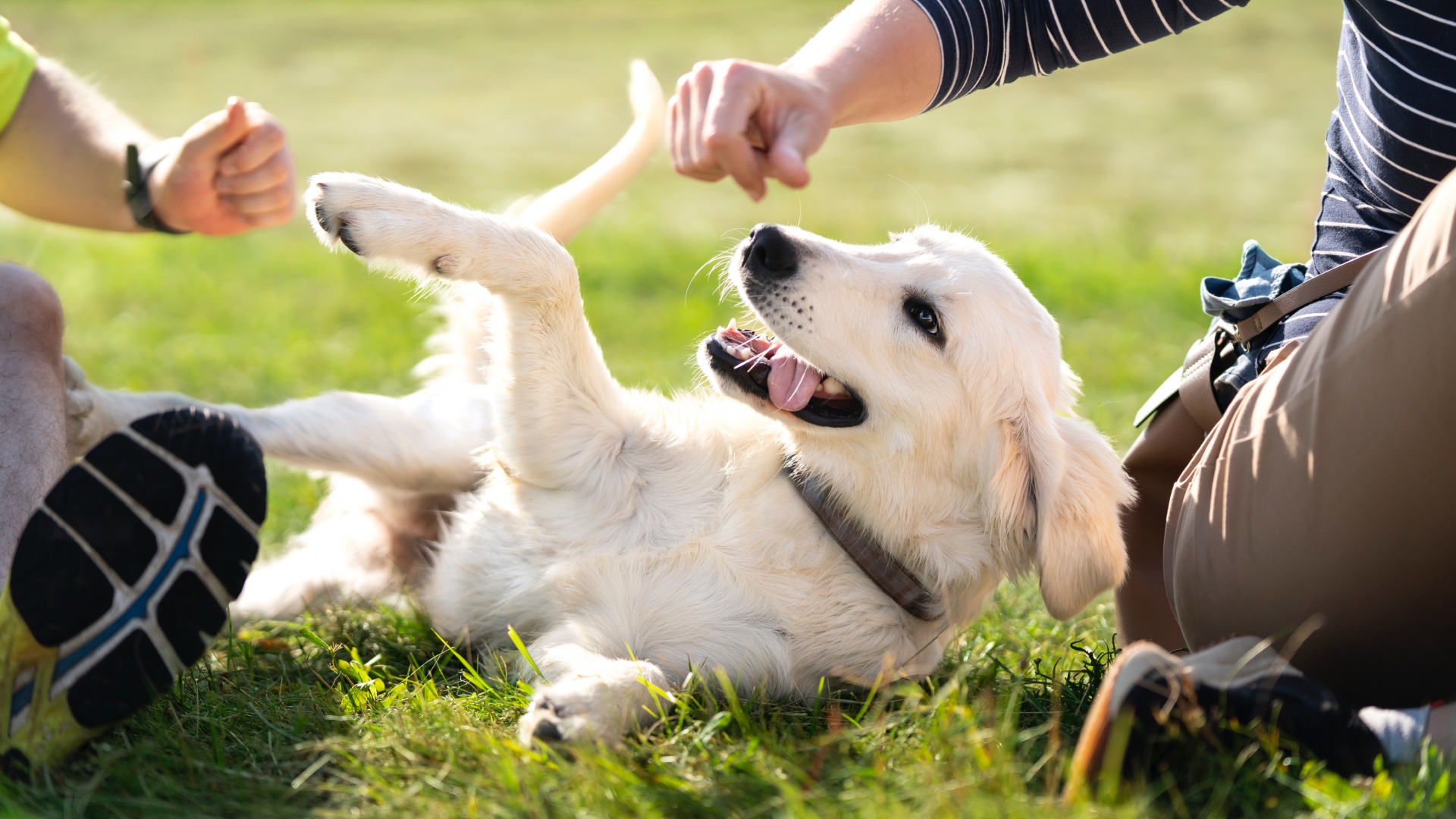Trainer reveals 5 big mistakes we make when meeting a new dog (and avoiding them will help keep you safe)
Keep yourself safe when you come across strange dogs with these five simple tips from an expert.

Our canine companions are typically our best friends, always on hand to cheer us up when life gets hard or accompany us on our latest adventure. But what about strange dogs who we've never met before, should we interact with them in the same way that we interact with our own pup?
Well, while it may be tempting to try to give them one or two of the best dog treats or a friendly greeting or pet on the head, expert trainer Adam Spivey says it's vital that you engage with new dogs in a considered way in order to keep yourself safe — and that means going against what feels natural with your own pup.
In an important Instagram post, Spivey breaks down the five things you want to avoid doing when you meet a strange dog and what to do instead. Let's take a look...
A post shared by Southend Dog Training (@southenddogtraining)
A photo posted by on
1. Holding your hand out for the dog to sniff: "This is a breed that can smell cancer," says Spivey, "it doesn't need your hand in its face." If you greet a nervous dog by holding out your hand or fist it may interpret this as you trying to touch them and it could lash out in order to protect itself.
2. Assuming that if a dog approaches you it wants you to touch it: "A dog coming over to you is just curious and wants to investigate," says Spivey, adding that a dog will use its nose to try to figure out who you are. "This is not an invitation to touch that dog."
3. Crouching down to their level: Spivey says that people often think that if they crouch down they're making themselves appear less threatening, but this isn't actually true. "If you crouch down and that dog gets spooked and it reacts, it's going to get your face."
4. Talking to the dog or staring at them: You'd think talking to a potential new fur friend might be a good way to get them on side, but according to Spivey it's best to steer clear of both of these. "Direct eye contact with a strange dog can make it very uncomfortable and talking to that dog when it hasn't yet got to know you can make that dog worse."
PetsRadar Newsletter
Get the best advice, tips and top tech for your beloved Pets
5. Stroking a strange dog on top of their head: When you go to touch a dog on their head, you may notice that a lot of them shrink back or move their head away. While this may not happen with your own pup (who you've built a trusting relationship with), most dogs you don't know well will move away in order to protect themselves. Anxiety in dogs can cause them to become reactive if a stranger tries to touch them, so it's best to avoid making contact.
So, if these are all the things you shouldn't do when you meet a new dog for the first time, what exactly should you do? Spivey says the best thing to do is to stand sideways on with no eye contact and no talking. Basically, you don't want to interact with this new dog in any way.
"We let the dog sniff us. Once that dog has finished sniffing us, if it walks away, it's just not that into us and now we know. If that dog sits nicely and the owner is okay with it, you can stroke the dog but do it calmly," says Spivey.
If you're worried that the tips above may not be enough, check out our guide on what to do if you encounter aggressive dog behavior which will help keep you safe if you find yourself in a scary situation.
American Journey Peanut Butter Recipe Grain-Free Oven Baked Crunchy Biscuit Dog Treats
$4.19 at Chewy
These grain-free, crunchy snacks are sure to please your pup. Small in size and packed full of flavour, they're made with wholesome ingredients that will keep your dog motivated and energized.

Kathryn is a freelance writer who has been a member of the PetsRadar family since it launched in 2020. Highly experienced in her field, she's driven by a desire to provide pet parents with accurate, timely, and informative content that enables them to provide their fur friends with everything they need to thrive. Kathryn works closely with vets and trainers to ensure all articles offer the most up-to-date information across a range of pet-related fields, from insights into health and behavior issues to tips on products and training. When she’s not busy crafting the perfect sentence for her features, buying guides and news pieces, she can be found hanging out with her family (which includes one super sassy cat), drinking copious amounts of Jasmine tea and reading all the books.

